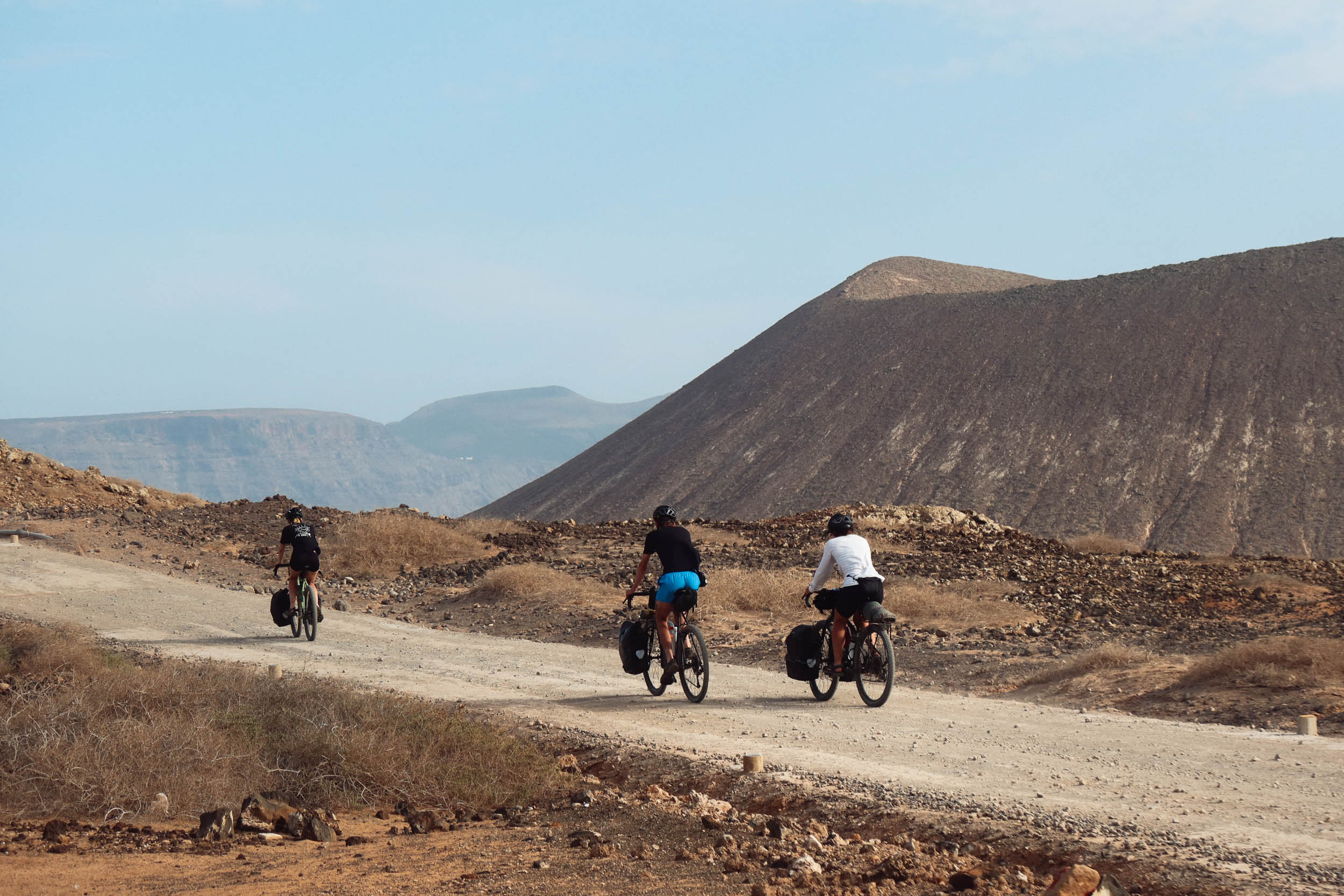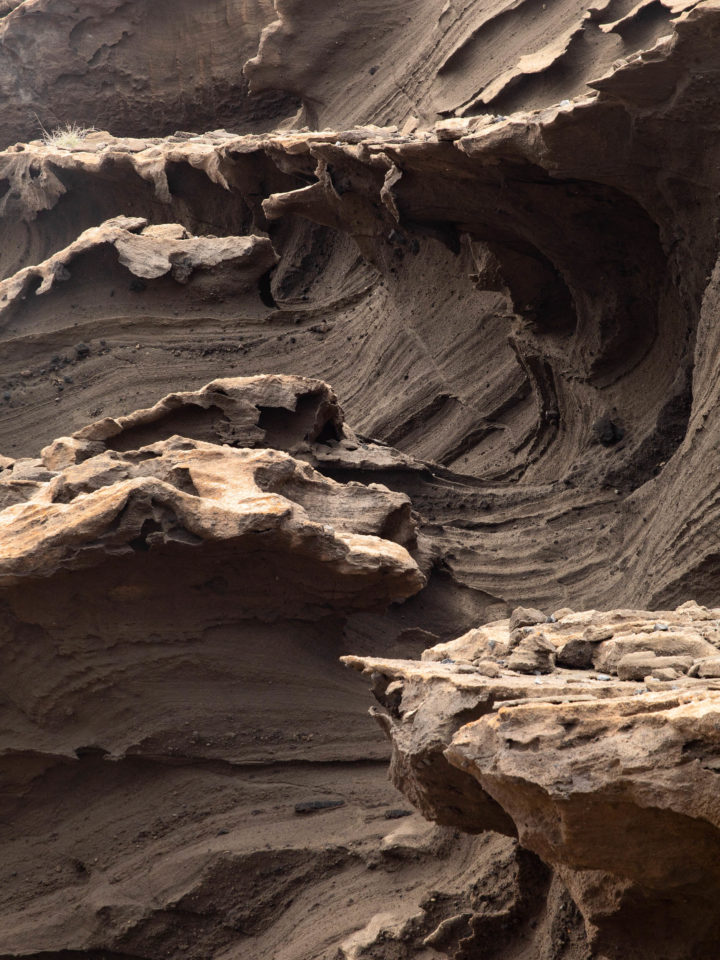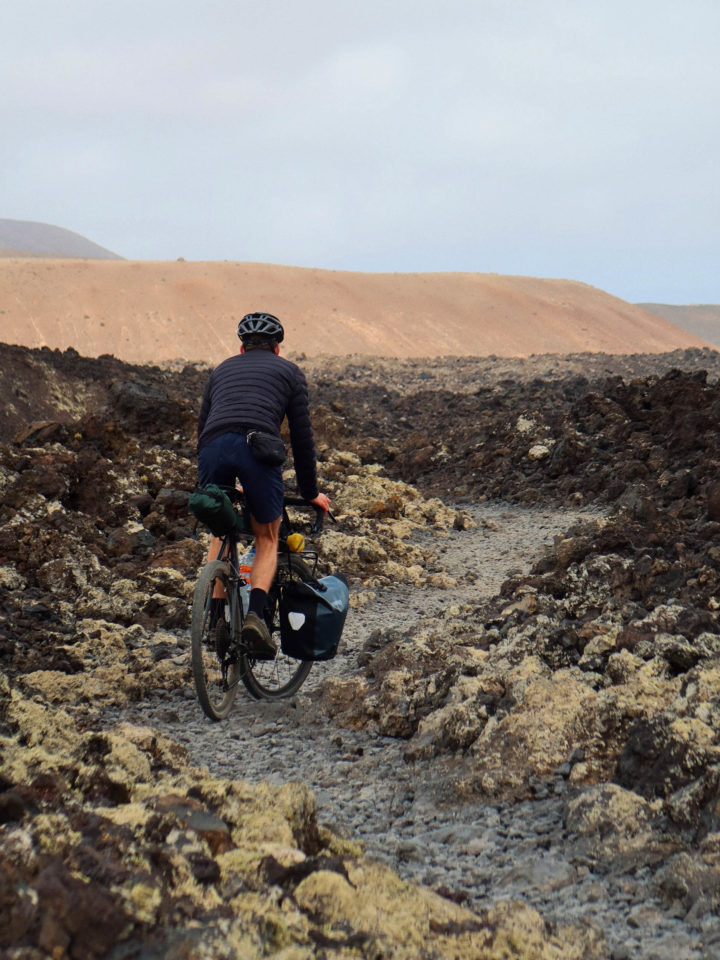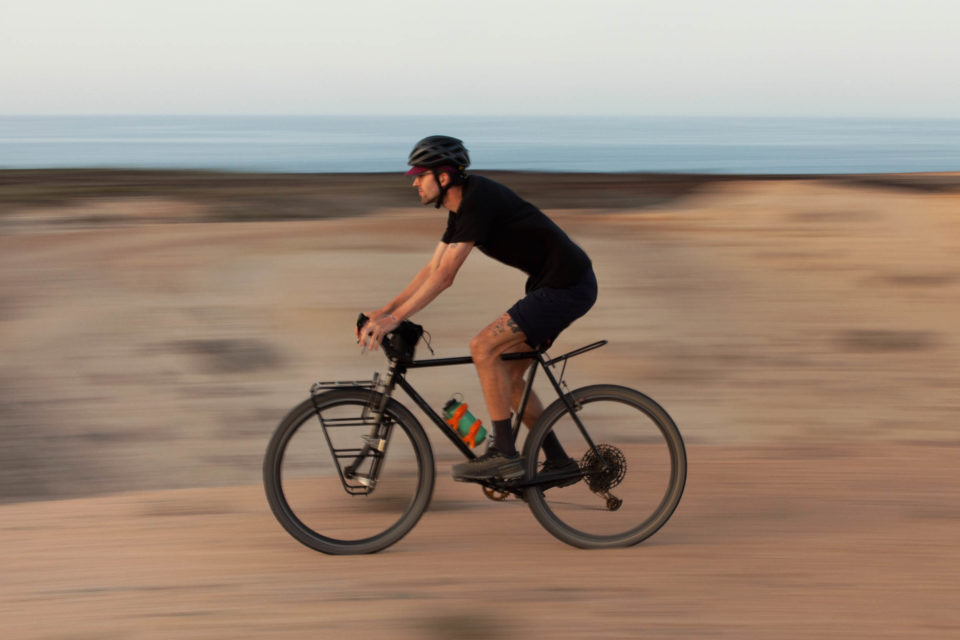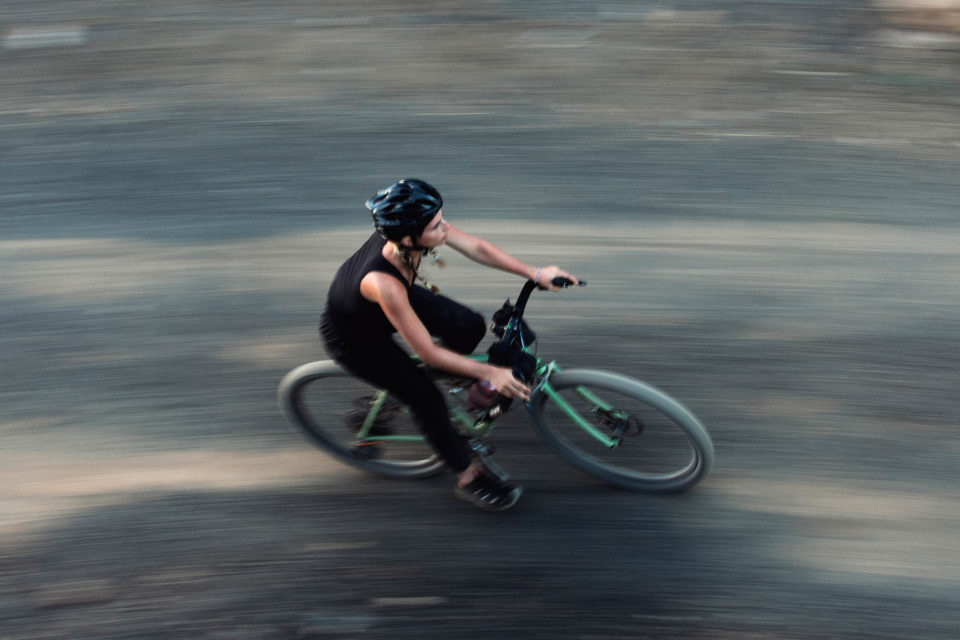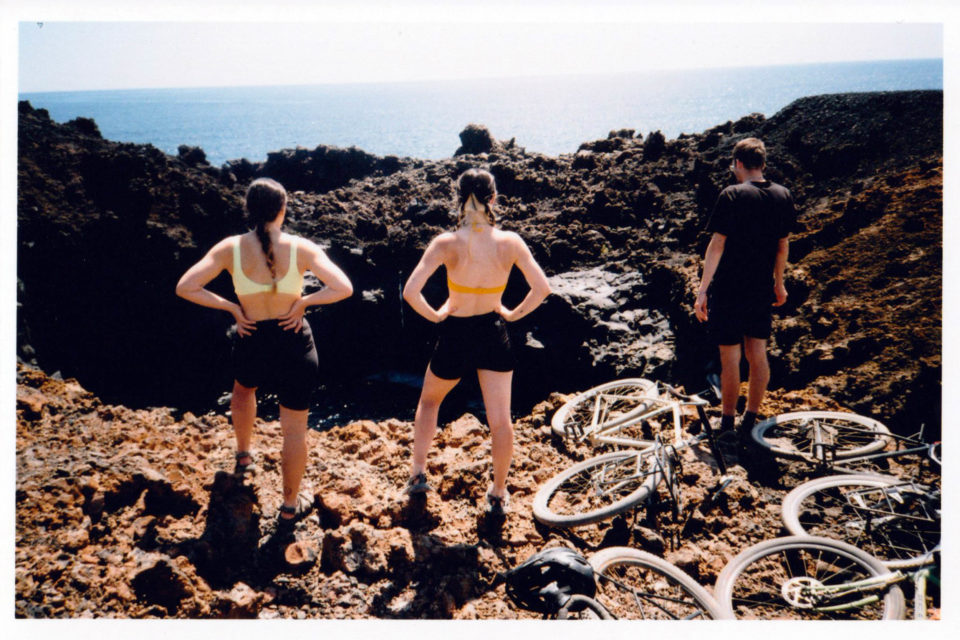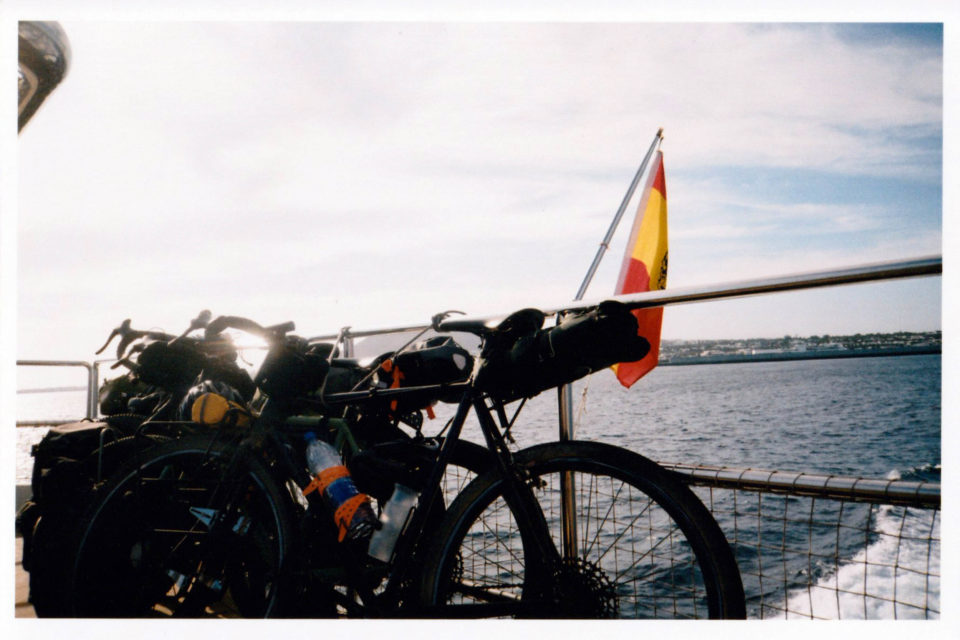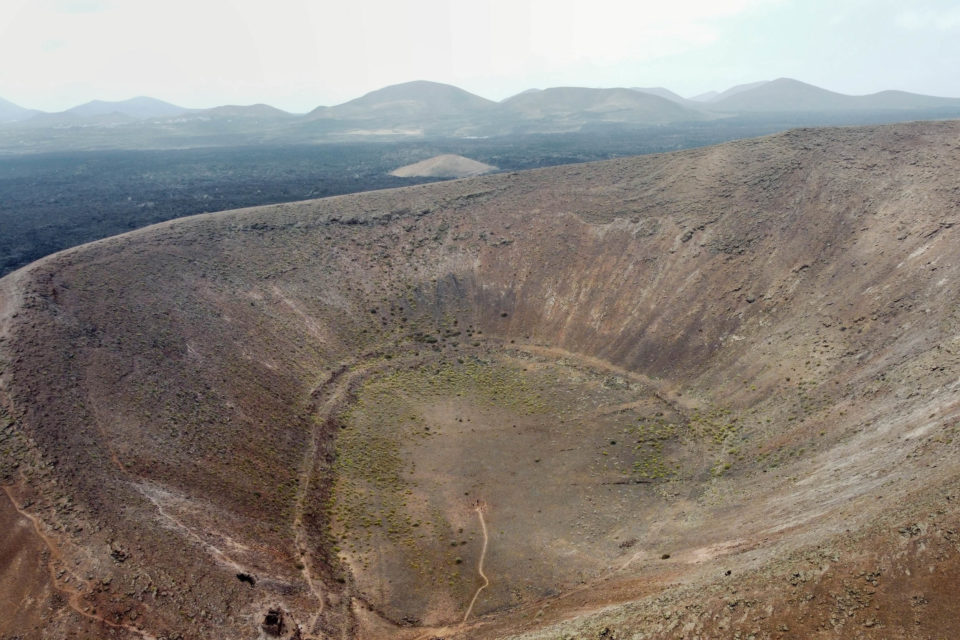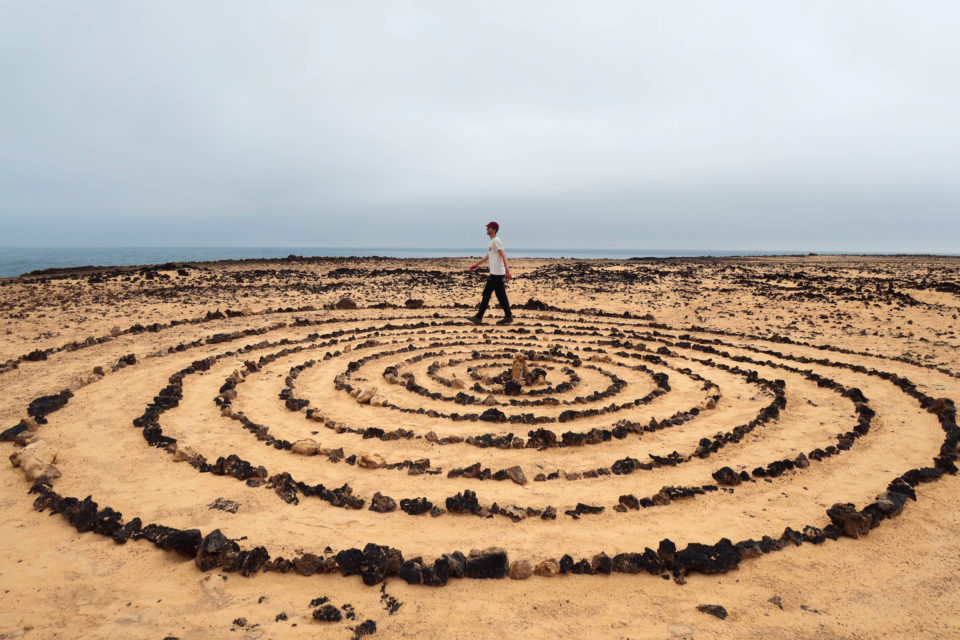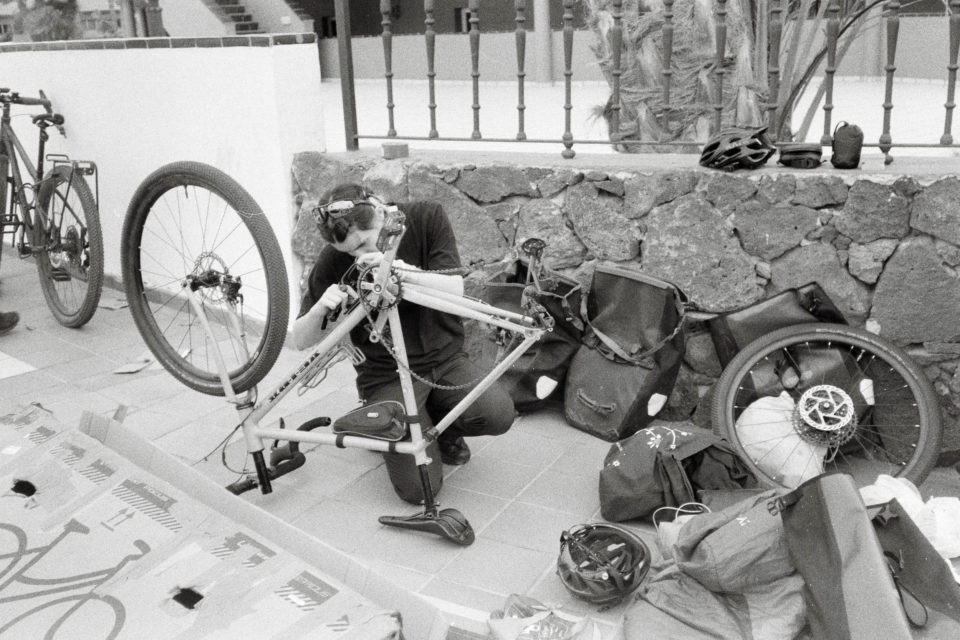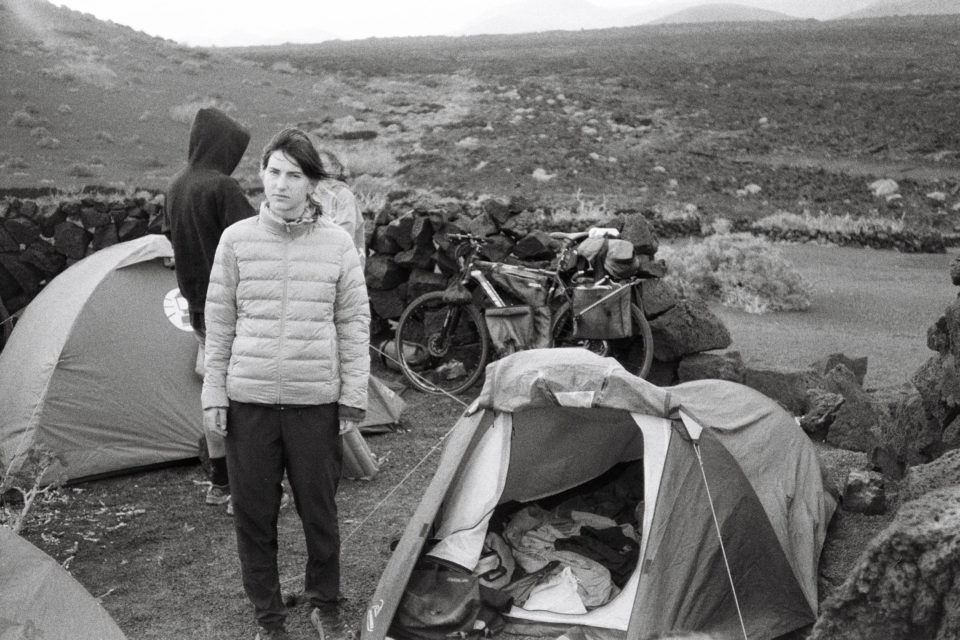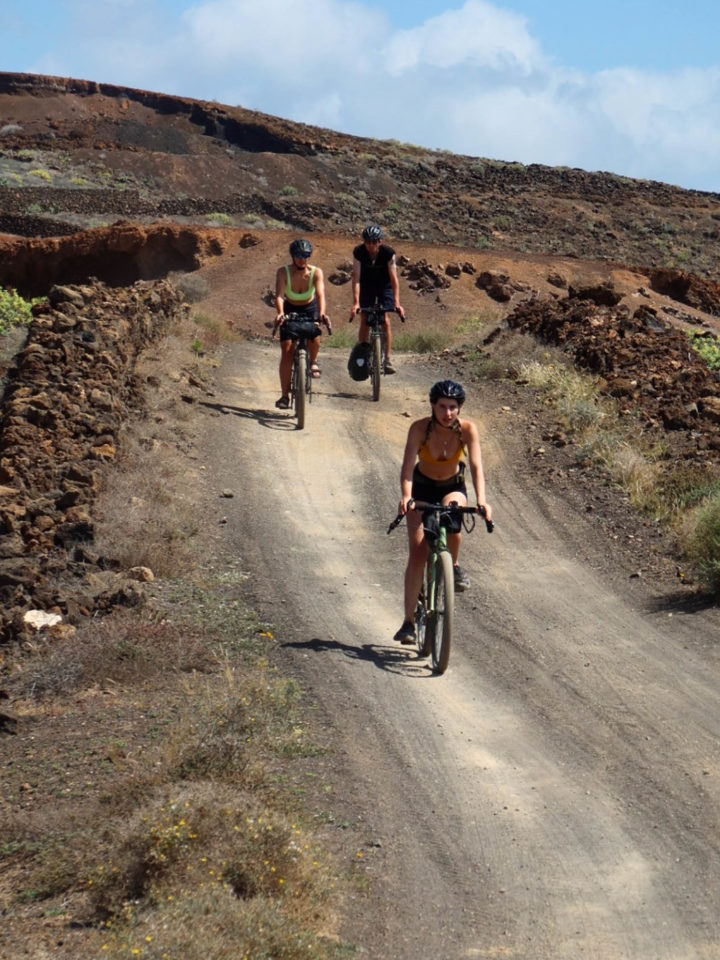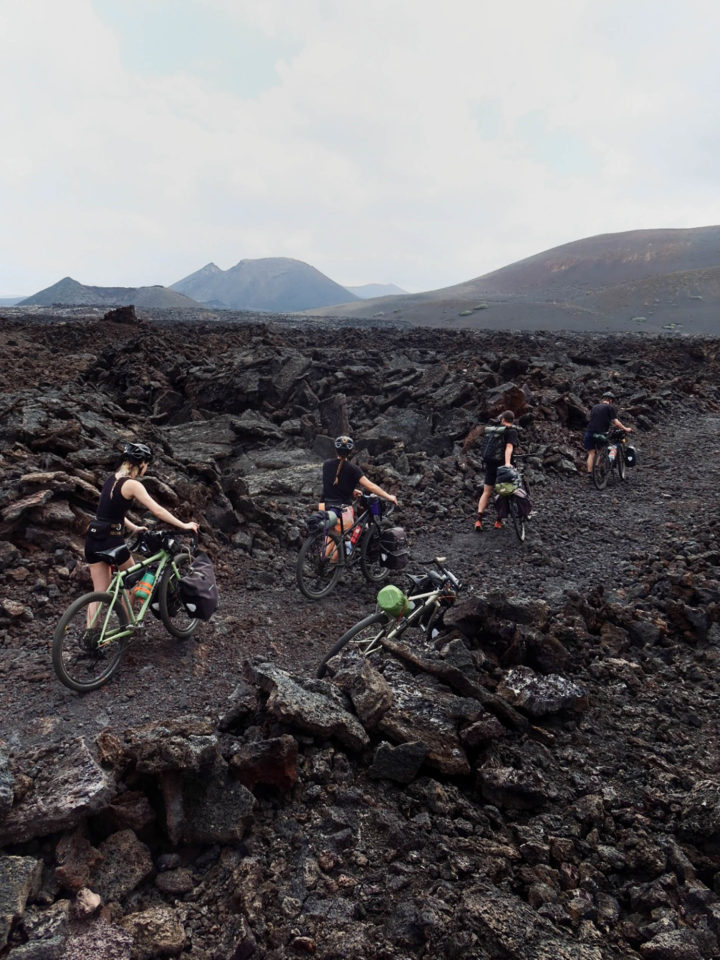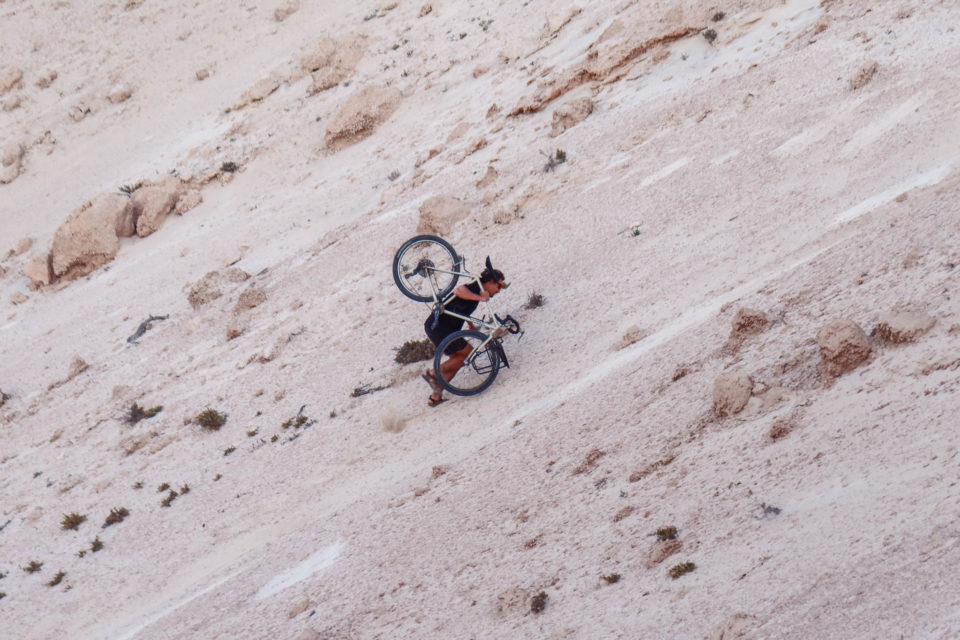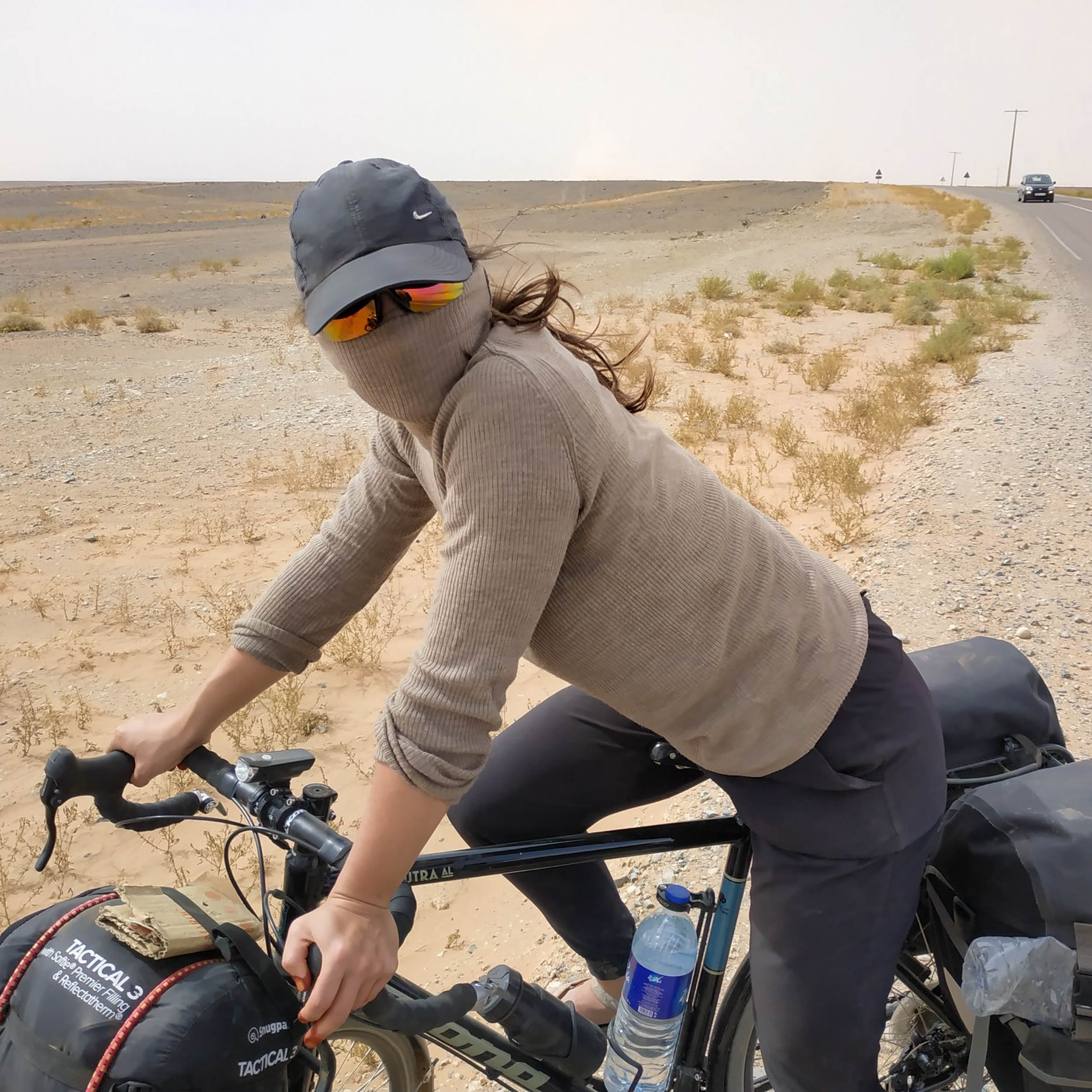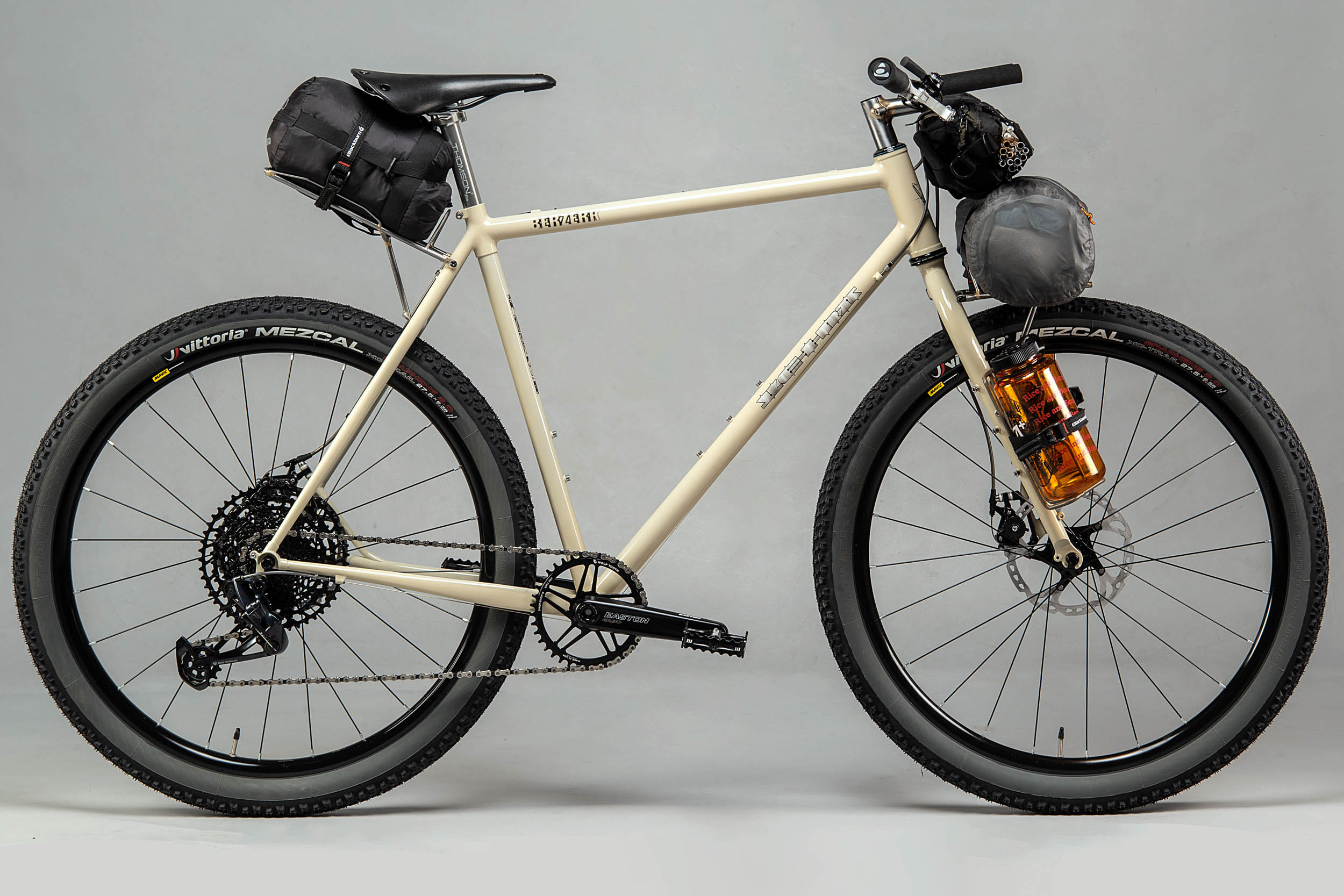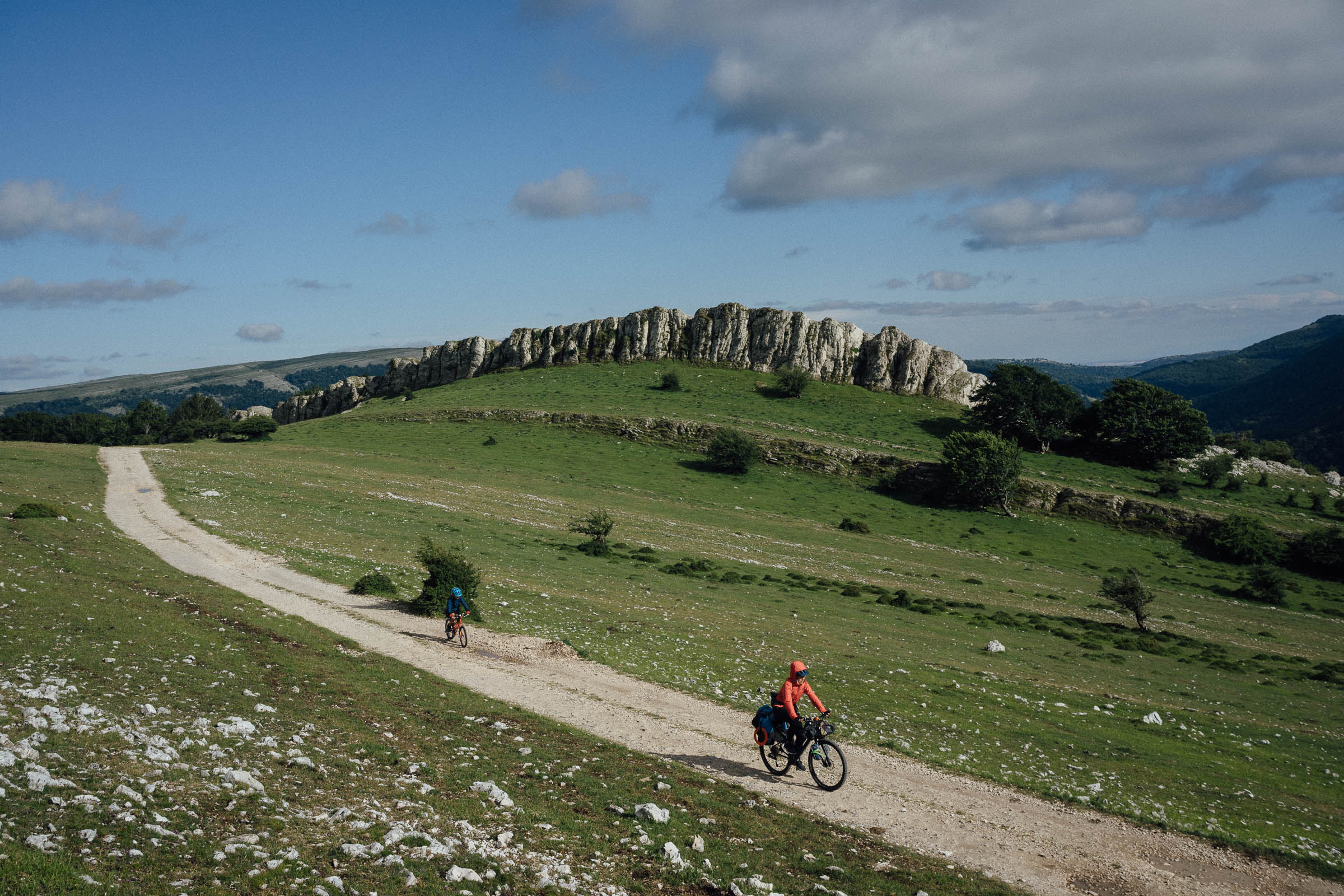Bikepacking Lanzarote: Chasing Shadows in the Badlands
Early this year, Rachel Walker and the crew from Vetra Bikes in Berlin escaped the cold and grey on a 10-day bikepacking journey through the spectacular volcanic landscapes of Lanzarote, one of Spain’s Canary Islands. Find a story from their travels through time and across the island’s many craters, caves, and cliffs here…
PUBLISHED Nov 4, 2022
Words by Rachel Walker, photos by Gil Corujeira, Christophe Synak, Nina Muro, and André Roboredo
It’s 2:30 am. I feel my tent being tugged violently, and my body jolts from side to side. The wind is having a furious tantrum and has us trapped in a vortex of air. Objects are flying around. A book slaps me on the face from the other side of the tent and knocks me out of my slumber. I sit up in a daze and crawl outside.
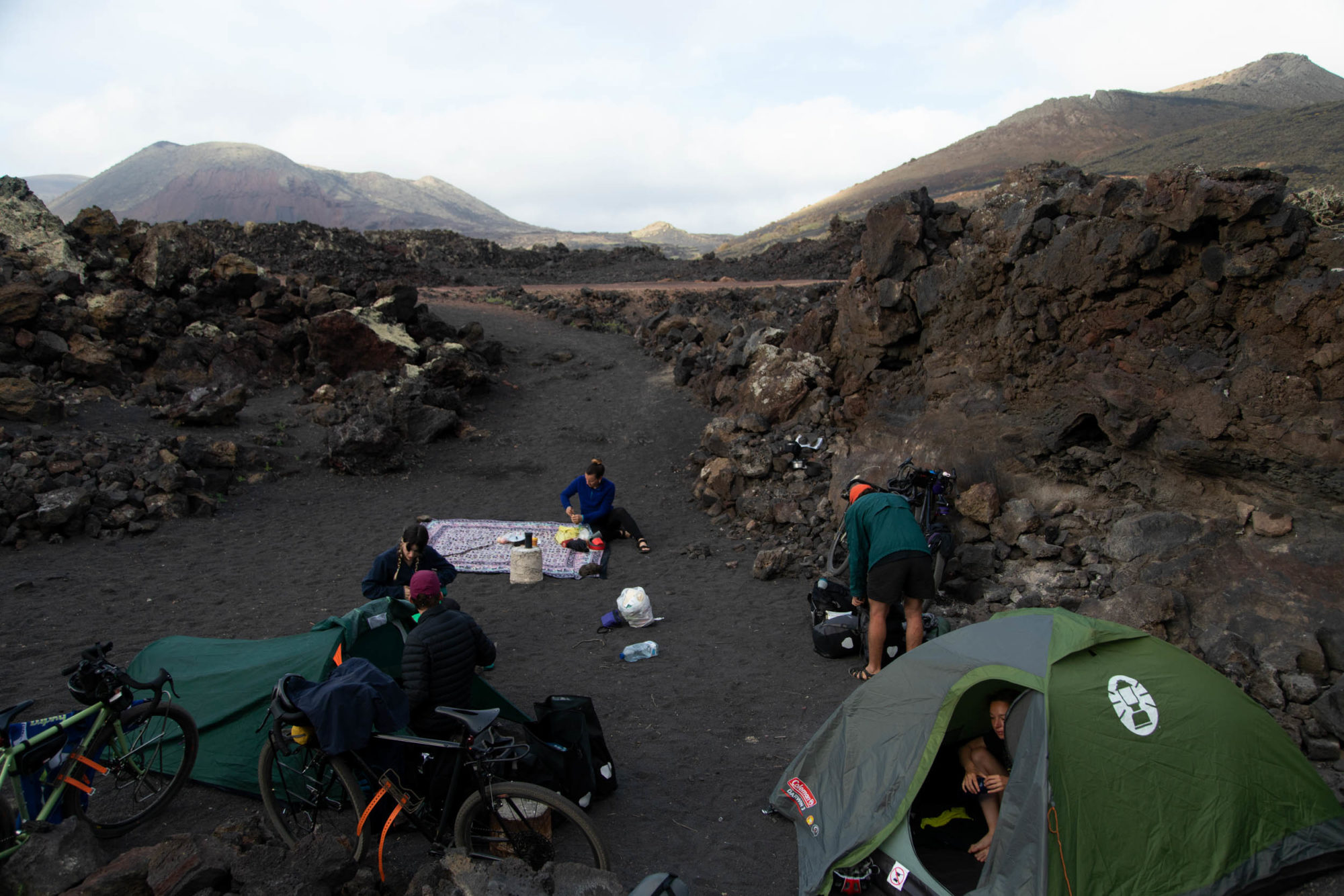
In the darkness, I can barely make out Gil, who is embroiled in a battle with his own tent a few metres away. Pegs are flying, tarps flapping furiously in a wind so strong we can barely stand up straight. He yells something, but the noise is deafening, and I can hardly make out what he is saying. “Use the bikes!”
We find some rope and struggle to tie the tent panels onto our bike frames. After what feels like an hour of struggle, we manage to secure our fly sheets to the ground. The wind keeps on howling unabated, and we clamber back into our tents, exhausted and beaten. Hopefully, this will hold until morning, I think to myself as I look at André snoring peacefully next to me.

By morning, the storm has subsided to a fresh breeze. In the middle of the gigantic volcano crater where we set up camp, Christophe has lit the stove and is quietly brewing coffee. Behind him, the Corona volcano – one of Lanzarote’s highest – dominates the landscape. Its distinctly shaped cone is the result of an eruption that took place some 21,000 years ago when lava exploded out of its crater and flowed westwards towards the steep cliffs of Famara before pouring down into the sea in a cascade of fire.
For the last four days, we have been cycling through an otherworldly landscape shaped by wind and fire. We have witnessed scattered rock formations, labyrinthine rock depressions, and volcanic rock tunnels with layer upon layer of overlapping lava flows. Thanks to the lobbying efforts of César Manrique, the island’s famous architect, there are no high-rise buildings on Lanzarote; even the architecture seems to have been shaped by the elements.
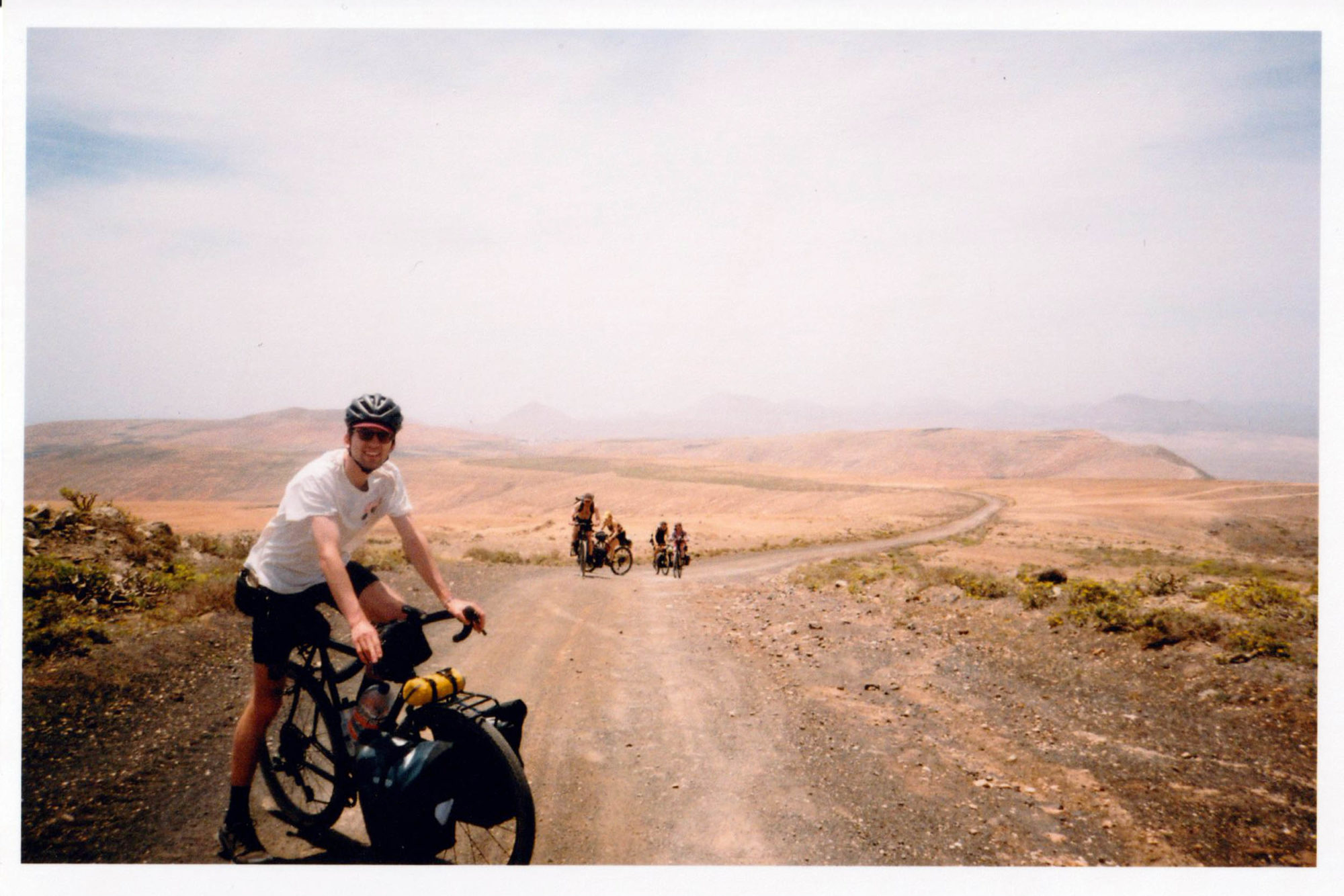
“Lanzarote: A Cyclist’s Paradise,” says the brochure, referring to the smooth tarmacked roads crisscrossing the island from north to south and east to west. No wonder this is the Spanish peloton’s training destination of choice. But we were headed for “Malpaís” – literally Badlands – with vast expanses of rough and barren landscapes consisting of solidified, uneroded lava.
We set off into the sea of lava at the height of El Golfo, near the black sand beaches of Los Hervideros, where the drum of the waves can be heard echoing in the cliff’s catacombs. Let’s be clear: the Malpaís is absolutely not intended for cycling. It’s barely penetrable on foot. The entire landscape is covered in massive, sharp, spiky lava rocks – the result of countless eruptions that have submerged the island for tens of thousands of years, rendering the landscape barren and hostile. But we are determined.
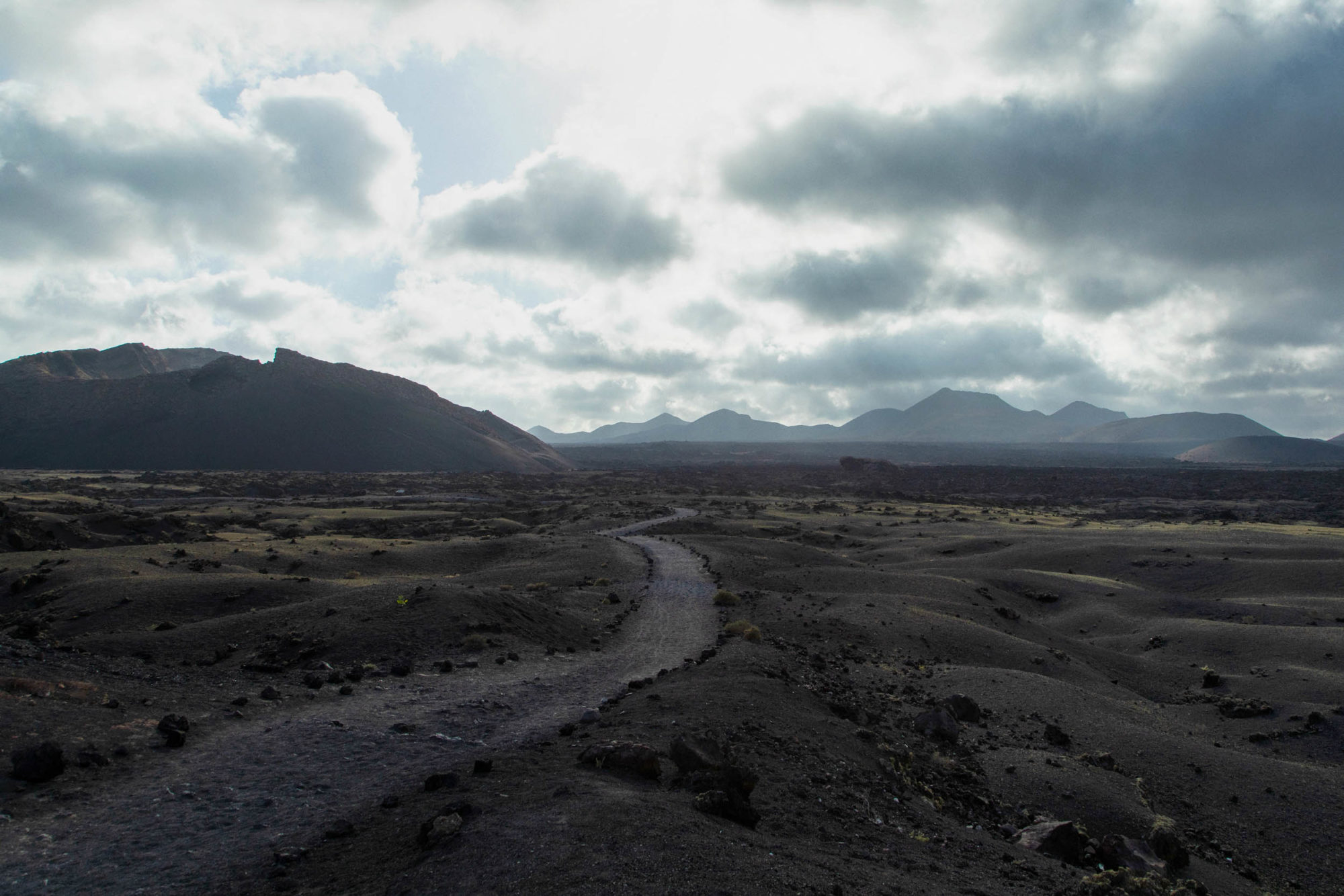
We follow a barely marked-out trail, carefully making our way through the sea of solidified lava. The landscape grows progressively more ominous and silent – like something out of Tolkien’s inhospitable lands of Mordor. At some point, the stone trail leads up to a solidified lava river – nature’s highway. Except that this one is full of sharp cracks and crevasses, and it doesn’t take long for the first cry of “puncture!” to emerge from the rocks.
It’s difficult to describe the feeling of being in such an environment. It almost feels like travelling two million years back in time – or maybe two million years into the future? There’s not a single trace of life except for a few resilient bushes and lichens with patterns and colours that lend a soft gradient to this otherwise dark abyss of a landscape. The atmosphere is charged and magnetic, and the violence of the explosions that took place hundreds and thousands of years ago still palpable. Here and there, large expanses of solidified magma still display their molten folds, tinged with the soft hues of green lichen. The scale of the scene only heightens its deafening silence.
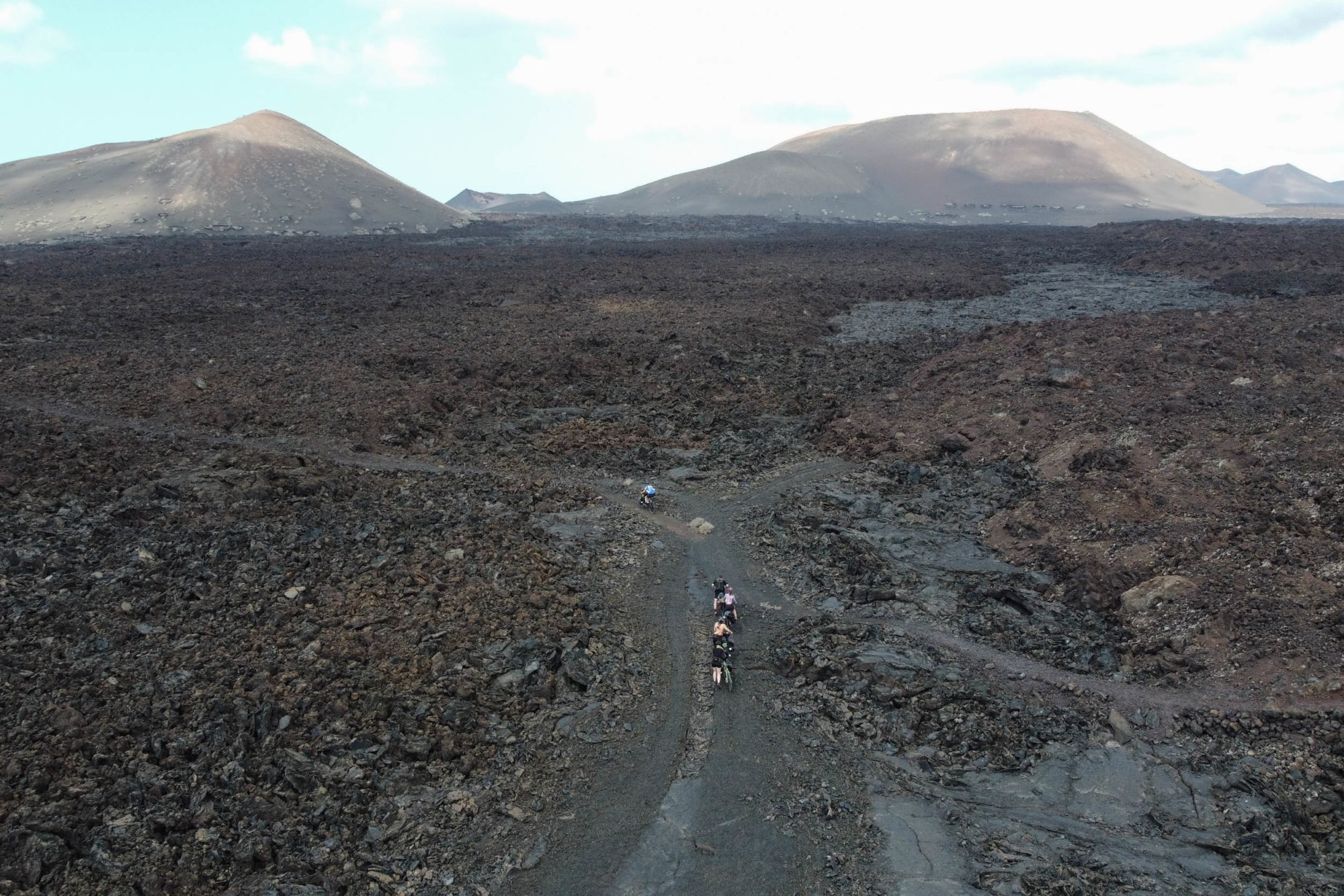
Dusk rolls in, and it’s time to find a suitable place to camp amid this minefield of sharp volcanic rocks. Eventually, we stumble into a collapsed lava tube that has created a kind of natural cave. This is our spot. As the landscape slowly fades into darkness, it’s easy to visualise Indigenous legends about the spirits and demons that were thought to inhabit these mountains. Guayota, arguably the most infamous of these, was an evil deity who lived inside the Teide volcano in neighbouring Tenerife, one of the gateways to the underworld. According to myth, Guayota trapped the sun, Magec, inside Teide, plunging the world into darkness until the great god Alchamán had him released in answer to human prayers. As successive volcanic eruptions repeatedly plunged the islands into prolonged periods of darkness, it’s not hard to imagine how mythology and geology coalesced into these legends.
Like tiny fireflies in the middle of a sea of darkness, we cast shadows onto the walls of our lava cave in the light of our headlamps and make up stories and myths of our own. There is so much that we will never know about this place: how it came to be, the lives of those who traversed these landscapes centuries before us, their beliefs, and their relationships with the non-human world around them. Like in Plato’s allegory of the cave, we see the shadows and fragments on which we can only speculate to stitch together the missing pieces. As I think about all these unanswered questions, sleep slowly morphs shadows into dreams.
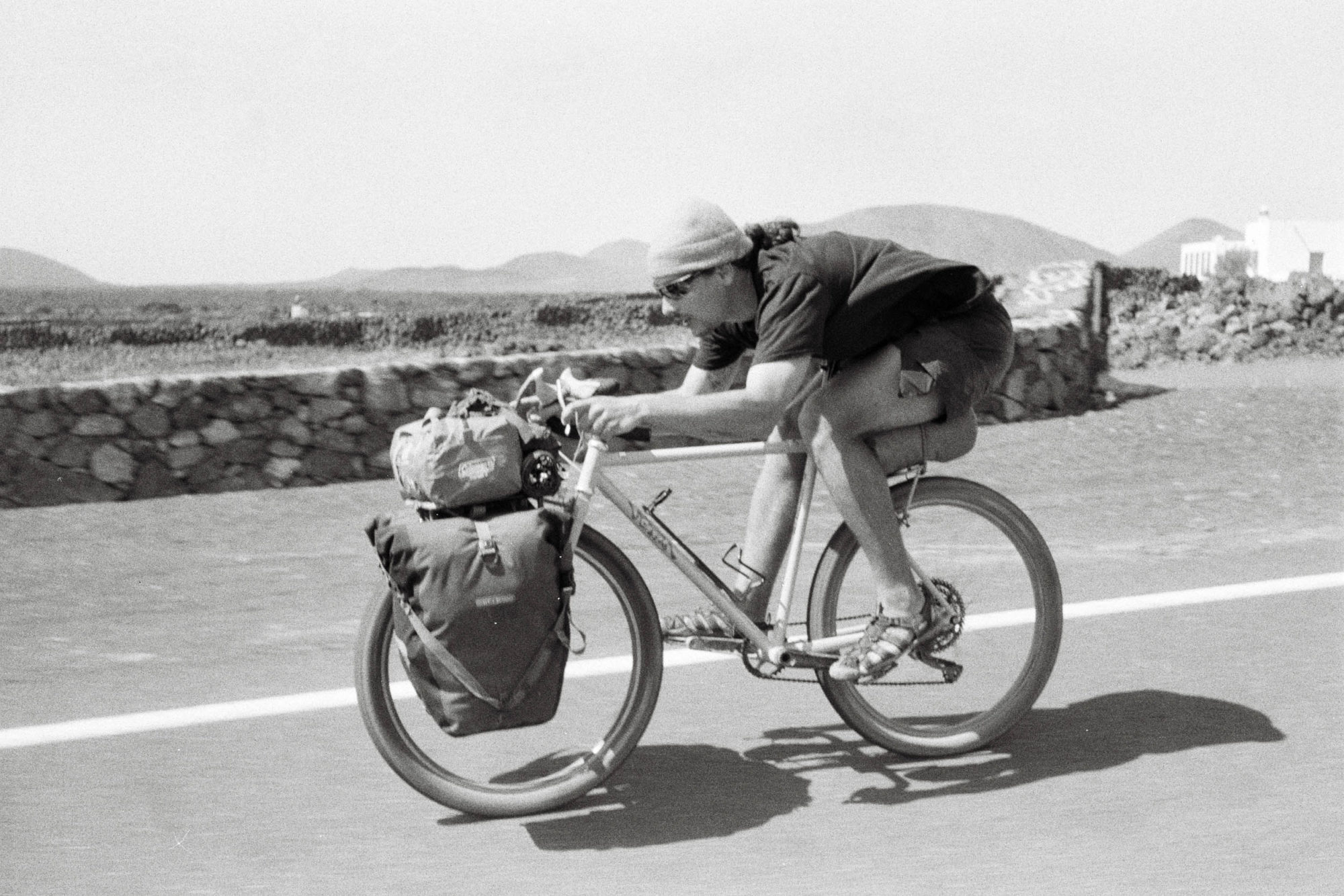
The next day, we continue our journey up north until we reach the sleepy coastal town of Orzola, its white sandy beaches and turquoise waters a welcome respite from the barren landscapes of the south. With a hop, skip, and a jump, we roll our bikes onto the ferry and are on our way to La Graciosa, the cliffs of Famara receding slowly behind us. An island of barely 1,000 inhabitants and the smallest of the Canarian archipelago, the feeling of remoteness is even stronger here than in Lanzarote, the air hotter and more arid. We are, after all, barely 100 kilometres from the Sahara.
It takes us half an hour to cross to the other side of the island and reach Playa de las Conchas. Staring across the white sandy beach and into the vastness of the Atlantic, we feel more isolated than ever. I look down at the sand and pick up a plastiglomerate. As we continue along the coast, we reach some rock pools filled with green algae, when out of nowhere, hundreds of small crabs, black as magma, clamber across the volcanic rock. We look a bit further and see another cluster busily making its way along the rocky coast. And another. They’re everywhere! It makes sense. What other animal has the resilience to survive in such an inhospitable environment? Crabs, the most successful animals on Earth, have withstood several mass extinctions and outlived dinosaurs. They’re the last living beings at the party, still crawling along the sea beds and coastal rocks.
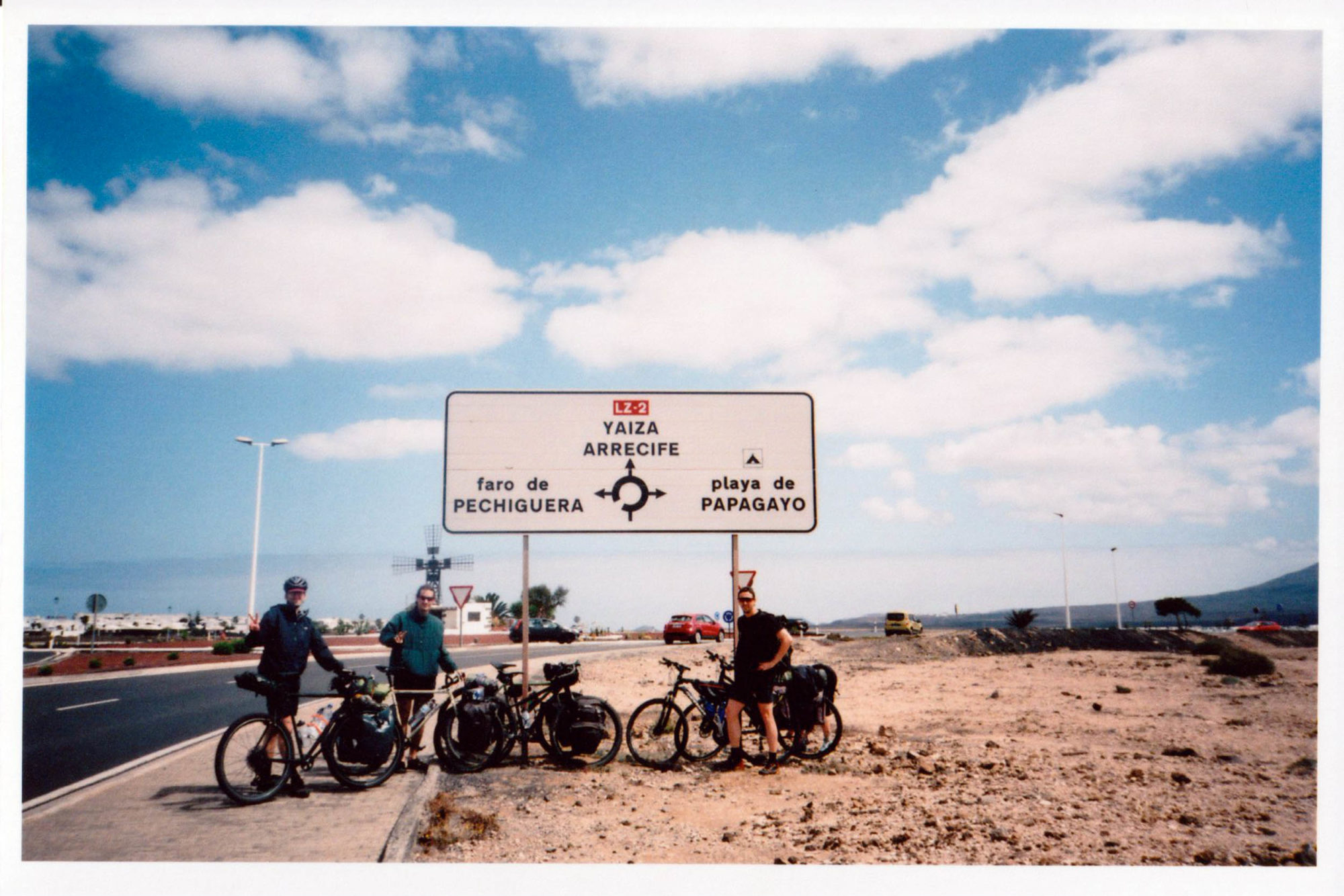
Back on Lanzarote, as we cycle along the coastal paths, we spend time observing these remarkable creatures. Armies of tiny crabs scurry about, scuttling into the sea and hanging on to the rocky shores even as they are hit by violent waves. Every year, the crabs shed their shells and grow new ones, leaving behind exoskeletons that turn bright red as they dry. In Spanish, there is a saying: Pensar en la inmortalidad del cangrejo, thinking about the immortality of the crab, which refers to daydreaming and contemplation.
As I pick up a discarded shell, I am awed by the intricate mechanics of its articulation. I can’t help but appreciate the power of these creatures to regenerate themselves, the vulnerability that comes with this self-renewal, and how they have adapted and flourished in a place where lava and ash have wiped out nearly all other life forms.
Cycling down the island’s eastern coast, we reach Jameos del Agua. In essence, a jameo is a geological formation that occurs when the roof of a volcanic tube collapses, exposing its inside. In this case, due to its proximity to the sea, the tube filled with water, hence the name. Getting off our bikes, we enter the dark cave and make our way down a series of rocky steps until we arrive at the underground lake, lit up by a ray of light penetrating the darkness from a single hole in the volcanic tube ceiling. The sight is surreal. We step closer to the water and can see thousands of tiny white creatures dotting the lake like stars in the night sky. Jameitos! We had heard about these albino white crabs, which are completely blind and can’t be found anywhere on the planet but in the jameos of Lanzarote.

And it’s not just the crabs of the Jameos del Agua that are unique. The natural monument has been transformed into a cultural centre, complete with a volcanic dancefloor and cave auditorium, courtesy of César Manrique, the architect and environmental activist who understands more than anyone the power of combining art and nature. Manrique’s vision was instrumental in shaping the island’s architecture, and his influence can be felt everywhere, not only in the many buildings he designed but in the aesthetic unity of the island as a whole. Even the buses carrying tourists into the Timanfaya National Park are painted a shade of ochre, making them blend perfectly into their surroundings.

We leave the coast and head back inland. A fork in the road faces us with a choice: dirt trail through the fields or perfectly tarmacked bike superhighway? I insist on dirt. As we cycle uphill in the blistering heat, we can see the road below casually circumventing the mountain, and I start to regret the choice. Nina shoots me an accusatory glance as she struggles up the hill of loose gravel. I throw her some candy for encouragement.
Being so absorbed in our uphill struggle, we barely notice the strange rock formations starting to appear around us. We finally crest the mountain top and race down the other side, exhilarated, until Christophe takes a corner too sharp, slips on the gravel, and scorpios off his bike. BAM! He lies immobile for a while before bursting out laughing as we catch up with him to assess the damage: a flat tire and a punctured knee. Could have been worse.
Slightly more carefully now, we continue down the mountain and suddenly notice the rock circles. Ahead of us, against a dramatic backdrop of black and red volcanoes, are thousands of circular holes surrounded by rock walls, each sheltering a single green shrub: vineyards. We are in Geria, where wine is grown employing a special technique that uses the volcanic ash’s moisture-retaining properties to keep the soil irrigated and fertile, thereby mineralising the wine.
We roll into the village of Masdache and decide to stop over at the Bodega del Grifo, easily recognisable by the striking cast iron gryphon – designed by none other than Manrique – guarding the entrance. As we dismount, a man approaches us: “You are here for Ironman?” We can’t help but burst out laughing. “We’re here for the Paperman!” Gil replies.
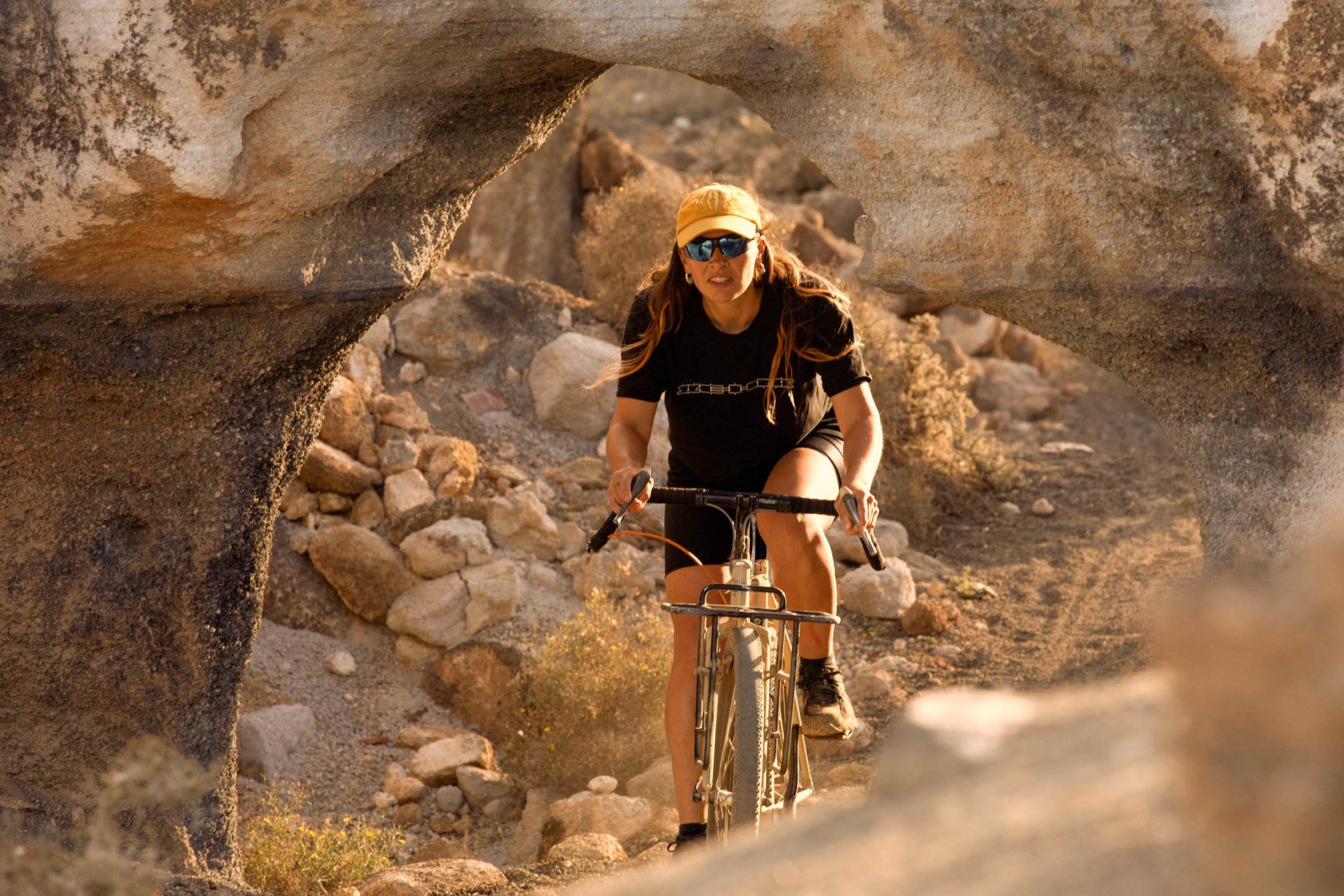
Thousands of years from now, when the island’s landscape is ravaged once again by another volcanic eruption or the effects of global warming, what will the archaeologists of the future think of us? Will they discover the iron gryphon and imagine that the wineries were places of worship, where elixirs of life were preserved in glass bottles bearing strange inscriptions? Will they see us as a civilization of brutes whose greed and carelessness brought on their own demise? What kind of speculative reality will they recreate from our shadows? What forms of life will endure, and what new ones will emerge? No one will ever know. Except maybe the crabs.
The Route
Related Content
Make sure to dig into these related articles for more info...
Please keep the conversation civil, constructive, and inclusive, or your comment will be removed.







